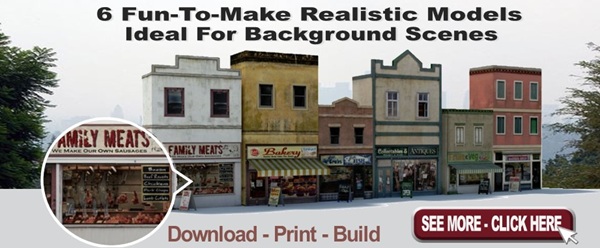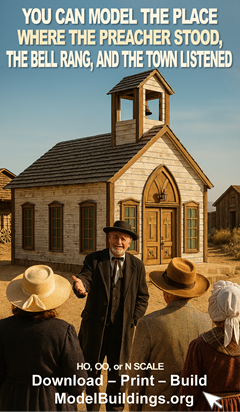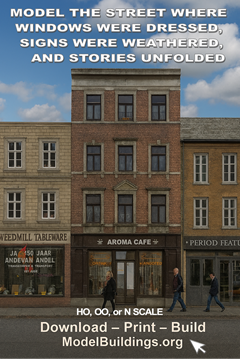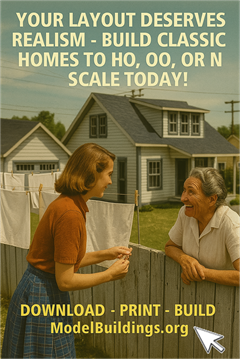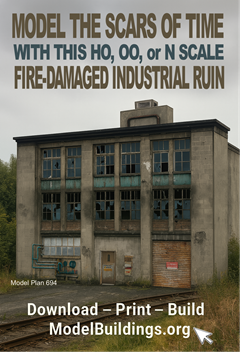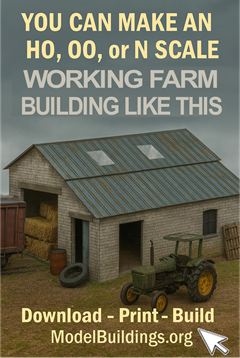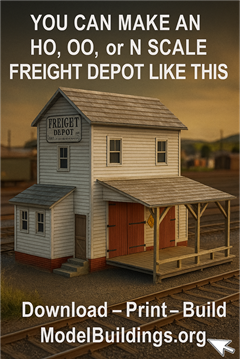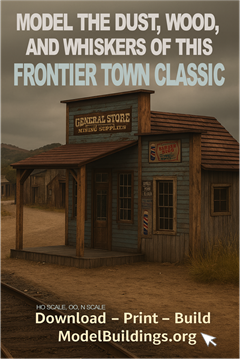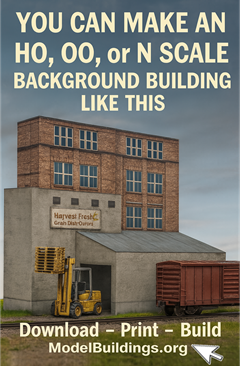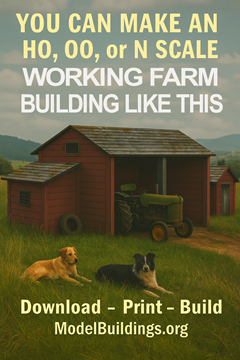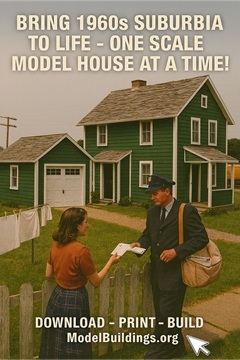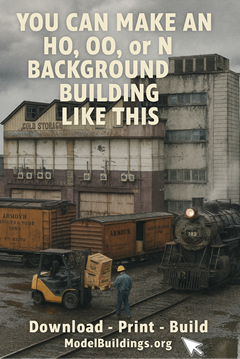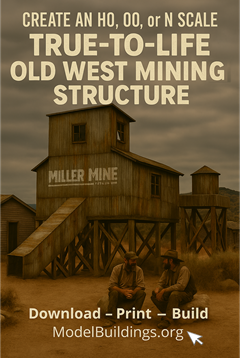Everything on model trains, model railroads, model railways, locomotives, model train layouts, scenery, wiring, DCC and more. Enjoy the world's best hobby... model railroading!
What Is The Minimum HO Tunnel Height Clearance?
Kevin D asks readers for advice:
“I’m progressing with my HO layout construction and have some tracks already operational. I nearly reached the stage of building a long tunnel where the incline will be 2%. I don’t run double or tri-level auto racks or many high cars, but still need to allow enough height clearance. I’m thinking 3” to 4” clearance above the railhead if I need to rerail cars, but I don’t want to make the clearance too high and spoil the dark mystery of when the train disappears and reappears. What do you think I should go with?”
Bachmann 0-6-0 Noise Problems
Ross writes:
“I acquired (for free) an old Bachmann 0-6-0 loco which makes quite a clatter from the side rods when running. I’m not sure if they are supposed to make so much noise? Does anyone else have the same engine and does it make a lot of noise?”
8 Point Checklist For Servicing Locomotives
Michael R kindly sent in these tips to share:
I have had a bit of experience working on locomotives to get them working efficiently, so can share some things I learned so far. I numbered the key points:
1. Take your time. Fixing or servicing a locomotive should not be rushed.
2. An older or well-used locomotive needs to be disassembled to locate any faults or to be properly serviced.
3. That is the only way to see inside to inspect and clean everything including all the moving parts.
4. That involves checking and removing the trucks, U-joints, wheel bearings, gears, electrical contacts, and other things.
5. When taking things apart, you might find some broken parts. If so, replace them if doable.
6. Consider substituting spare parts from other locomotives that couldn’t be repaired.
7. Occasionally gears can get cracked and dirt gets can into things. Take your time because cracked gears are difficult to spot. A missing gear tooth on the other hand should be easy to see.
8. When your inspection is complete, you can lubricate everything when putting the parts back together. Use proper greases and oils.
I just tried to keep to the basics, but other people might want to add to my list.
Peco Electrofrog Points
Barry from Lancashire in the UK asks:
“I’m about to buy my first track sections and am leaning towards Peco because they do electrofrog points which I will need for DCC. I’m trying to get my head around the technical stuff but am finding it all a bit confusing. If I went with Hornby instead, do they also have a type of electrofrog points? I had a look around and got confused because they have different names I think?. I just want to compare apples with apples, buy the best, and stick with one brand, so thought I would ask.”
Video Tutorial -How To Make a Multi Roof Background Industrial Building
When making this industrial background building to OO or HO scale you can use card, and corflute or foamboard. Being smaller in size, card is recommended for N scale. The good thing about this model is that can be extended to the size you want. It is simply a case of downloading the plans one time and printing out one or two extra copies. The design is available in a tan color and the red brick texture seen here, so the two different colored buildings could be positioned side-by-side to add variety and interest to the scene. Although not necessary, this video tutorial demonstrates how the windows and doors can be cut out to further enhance the 3-dimensional appearance of the model.
You can download the plan for this multi-roof industrial background building here
Trains Will Not Run
Mike posted this question to others in the hobby:
“ I have two o-scale trains on separate tracks with separate power sources (transformers). The systems worked well for about a year or two, but now the trains will not move even with full power. I can hear them trying to start, but no movement. Any suggestions on how to get them to run please?”
9 Myths Related to DCC Model Trains
1. DCC is complicated and too technical for new users and beginners.
Not at all. In fact, many users find DCC more convenient and easy to follow than their traditional DC or analog railroad models. There are no isolated sections that you need to worry about, nor any switches that you will have to throw.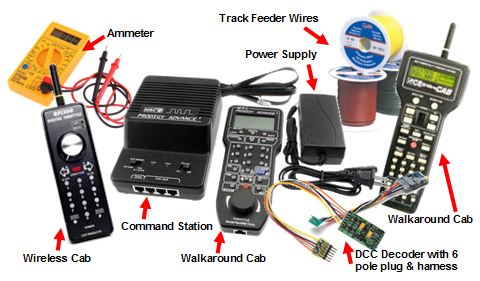
You can control more than one train at the same time without worrying about wiring and additional constraints.
Setting up the system and controlling accessories and other equipment like lighting and sound can be done by just pressing a few buttons. If you can use remote control, you can simply run a DCC layout as well! It’s that simple!
2. I will have to convert all my old and favorite locos to DCC.
Most of the trains today come with the option of adding a socket that can be used to install the decoder in. Thus, they can be easily used with a DCC layout without having to change them or discard them.
However, even if you have some older models of locos that cannot be used with DCC, you do not have to let them go.
The same DCC layout can be used to run DC trains as well, however, not preferably at the same time.
So, it is a good idea to purchase some DCC ready locomotives for your new layout and utilize the older ones in the traditional DC format within the same railroad model. Twin advantage!
3. I will have to get rid of my old DC blocks in the Layout.
It is not necessary. You can leave your old DC blocks in place and then turn them all on. However, the problem of reversing loop which will occur will have to be sorted out through a reversing loop module.
These reversing loop modules can automatically detect the loop and switch the power between the tracks so that a short circuit is avoided. So, in short, you do not need to make any drastic or major changes to your layout! A little touch up here and there will do the trick!
4. Only 2 wires are needed for DCC operation.
This can be both true and false. Although it is true that you need two wires to power up the tracks and send them the signals, you will need extra feeding wires to connect the BUS wires and power up the rails after every few feet.
So, in simple words, there will be two wires that will leave the controller with the signals, and then they will be distributed into a few feeder wires to power up the entire layout.
Actually, the DCC power BUS, the main wiring in the layout, consists of two wires, red and black, that can be attached to the track and make the train run.
However, extending it to feed the track every few feet will result in a more efficient and trouble-free operation. Also, some other wiring on the layout will include the feedback BUS and the booster connectors if used.
5. Without defining DCC safe or friendly points, my layout will not run.
DCC safe points are nothing special – it just requires that the connections are done keeping the right polarity in mind so that no short circuits occur in the layout. As DCC is more sensitive to shorts, therefore the point work needs to be done accurately and then soldered correctly.
To make the switches or turnout points DCC friendly, the polarity of the frog needs to be considered.
Either, it has to be made completely isolated from the adjoining rails, or if it is a live frog, there needs to be a switching mechanism present to switch the polarity so that the frog has the polarity the same as that of the inside rails of the exit track.
6. DCC involves computer control.
It is helpful to use computer control, but it is entirely not necessary. DCC can easily be controlled manually through the controller and the cab, and you do not need to work on a computer or use complicated software to run the trains on a DCC layout. It will just be like your traditional railroad layout – only with a touch of more ease and added control!
7. I am a programming novice and DCC involves programming before use.
When people hear the word “programming” they instantly think of complicated codes, computer interface, and complex procedures. However, when it comes to DCC programming, you can easily refer to it as “configuring steps” or “set up procedure”.
DCC does not require any extensive programming as such, in fact, if you are a beginner you can easily purchase factory-ready decoders and equipment that do not require any additional setup from your side. Just installing the decoder will make the layout work and trains will start moving right away.
The only “programming” bit that you will need to do when using a DCC layout is allocating each of the trains on the track a separate address so that they can be communicated with the right signals from the command station.
This involves just a few key pressing on the controller so you need not be afraid of it! When starting, just leave the settings as it is. As you advance, you can play around with the settings and make it more feasible to your requirements.
8. The layout will have to be rewired for DCC to work.
Wiring for DCC can give the chills to new users, thinking that they may have to rewire the layout from scratch and make complicated adjustments and additions to the layout to get the trains working.
However, this is far from the truth. DCC wiring is fairly easy, simple, and straightforward. Just the track has to be powered with the right polarity and the joints soldered correctly to avoid any short circuits. All your locomotives on the track will be electrically isolated, so you do not need to worry about individual wiring constraints at all!
9. There is no reference or help available in my area.
Having some extra help down your sleeve can always be a great resource, especially if you have friends in your circle that share your hobby or there are clubs where railroad modeling enthusiasts gather and discuss ideas.
However, if you do not have the right resources at your aid, the internet is always a good place to start. There are several websites that guide users from basic to a professional level. One such resource is http://www.dccmodeltrains.org
Tutorial – How To Build Wild Western Buildings From Paper, Card, Corflute and/or Foamboard – Making A Stagecoach Station 3-Minute Demonstration
Watch this 3-minute tutorial demonstrating how to build a stagecoach station. The model made in this demonstration is OO, but you can also make this stagecoach station (with telegraph office) to HO scale or N scale.
Download the stagecoach station plan at https://www.modelbuildings.org
FREE Scale Converter Sizing Tool For Converting Real and Scale Model Sizes
The online calculator is totally free to use and is perfect for converting from model railroad scales to the full real-world size of structures and trains.
Access the free scale model conversion calculator from the Railroad Resources link in the top Navigation Bar at https://www.modelbuildings.org
Is Rail Pro Worth Considering?
Klaas writes:
“My kids tell me to do what I have been dreaming of for a long time, building a HO model modular railroad. My kids surprised me with a gift of a locomotive. I want to build in modules so I can move the layout out of the house if needed. I have read a lot about Rail Pro by Ring Engineering, and it looks like something I might like to use as on their website information it claims you can also run DCC on their system. What is your opinion, what are the Con’s and Pro’s of both Rail Pro and a DCC system? Do people prefer other systems?”
Add your comments (suggestions/opinions) below.
Hornby R8072 Point Problem
Bruce asks:
“Hi, when I move my Hornby R8072 point to switch trains to my extension track the train slows and usually stops. Any ideas?”
Add your comments and see the answers below.
Removing Oxidized Greenish Stuff From Trucks
Jeremy writes:
“I dug out an old Mallard engine that belonged to my late uncle. The front nose if that’s what it’s called looks very sleek a bit like the modern bullet trains. Very different from most engines I think. I don’t have a track to test it on but would like to remove the greenish oxidized stuff on the trucks. I’m hoping it is only surface damage. How do I remove the oxidization without causing damage?”
Replacing Plastic Wheels and Plastic Couplers
Bendt seeks your help:
“Hi, I got a cheap job lot of old wagons, tank cars etc at a garage sale. The problem is being attached to the trucks they mostly have snap-in plastic wheels and plastic horn couplers. I tried converting one car but it was very fiddly. Am I wasting my time trying to make a silk purse out of a sow’s ear? Should I just start over with new cars? Thoughts appreciated.”
Write and view COMMENTS below.
Which DCC System Is Best?
Darryl is hoping for suggestions:
“I am about to embark on my first model railway journey and not sure where it will take me, but I know it will be DCC. What systems do you recommend that are for starting off and expandable for the future? I want something reliable too. Thanks in advance.”
Share your thoughts, experiences, and opinions with Darryl using the COMMENTS link below.
Another HOW TO Video to Share – Building a Grain Elevator and Hopper Loading Shed
This short sped up 3-minute tutorial demonstrates how to build a Farmers Co-op pool elevator in OO scale. The same model can also be made to HO scale, or N scale although it will be easier using card instead of corflute if you are building to the smaller N scale sizing.
To download the plans for this tall grain elevator and hopper loading facility, simply select from the OO / HO, N scale size options at the checkout. https://www.modelbuildings.org/grain-elevator-farms-structures-train-models/
Making Your Own Bridges or Viaducts for Model Train Layouts
There are several ways to build bridges and viaducts for model train layouts. This tutorial walks you step by step through the building of a paper model bridge that was constructed from corflute and cardboard. Building bridges using this method has several advantages apart from being able to quickly download the plans to your computer saving on postage. The color paper plans are like photos so the model builder doesn’t need to be skilled at airbrushing to achieve an incredibly realistic effect. The plans even have life-like details like graffiti on the brickwork.
The plans can easily be adapted in many ways so, for example, tunnels can be made as single portals or double portals for two tracks. The tunnels can even be closed off thereby turning a tunnel into a sealed brick archway. The tunnel portals or arches can be constructed in different shapes and textures.
And, most importantly the bridge can easily be lengthened or made wider, to suit the individual layout. Just one set of plans needs to be purchased and if you make a mistake or want to extend the bridge length or width, it is a simple case of printing out another copy. This demonstration constructs the plan to OO scale, however, the bridge plans can be made to HO scale (87% of OO), or built to N scale.
To download these plans, simply select from the OO / HO, N scale size options at the checkout. https://www.modelbuildings.org/bridges-and-tunnels-pack-deal-c/
Best Way to Increase Size of Layout
William writes:
“I currently have a small N scale layout of 2 feet by 3 feet. What would be the easiest way to expand onto another larger board? I was thinking of maybe building a flyway on trestles onto the new board. Might something like this work?”
